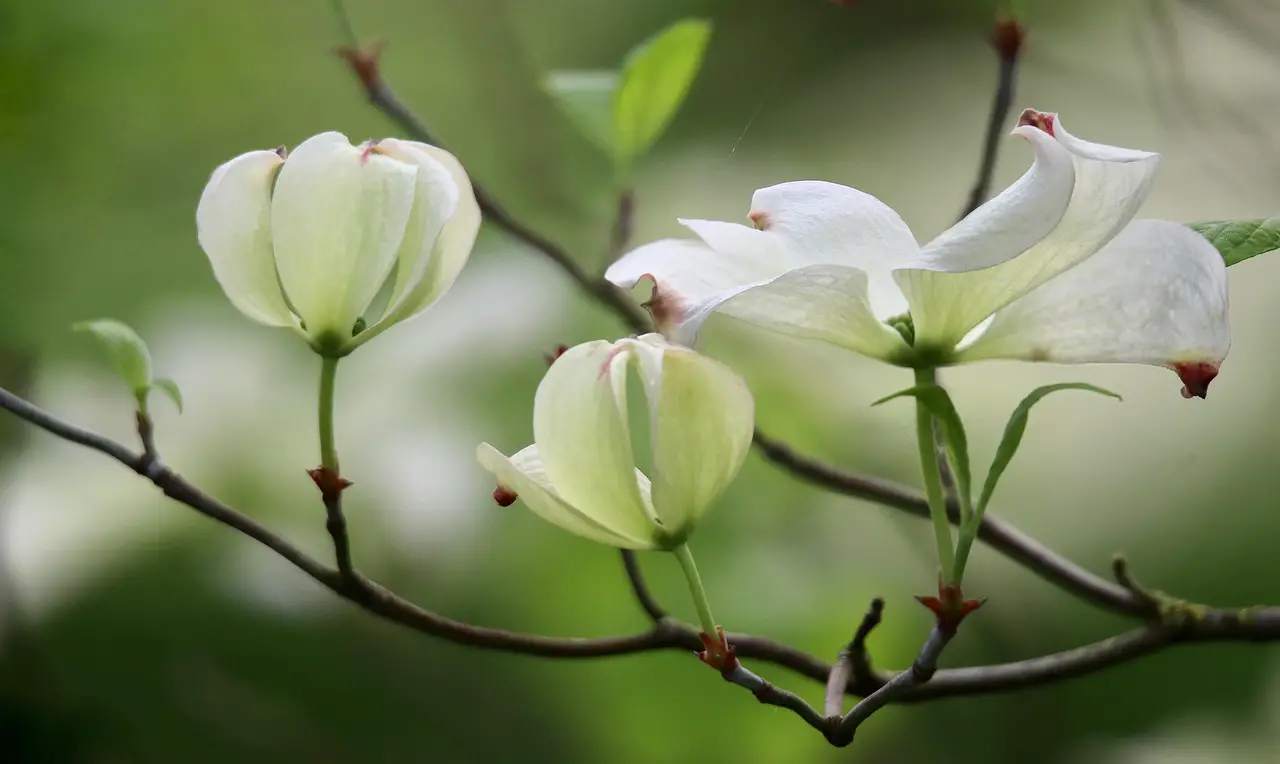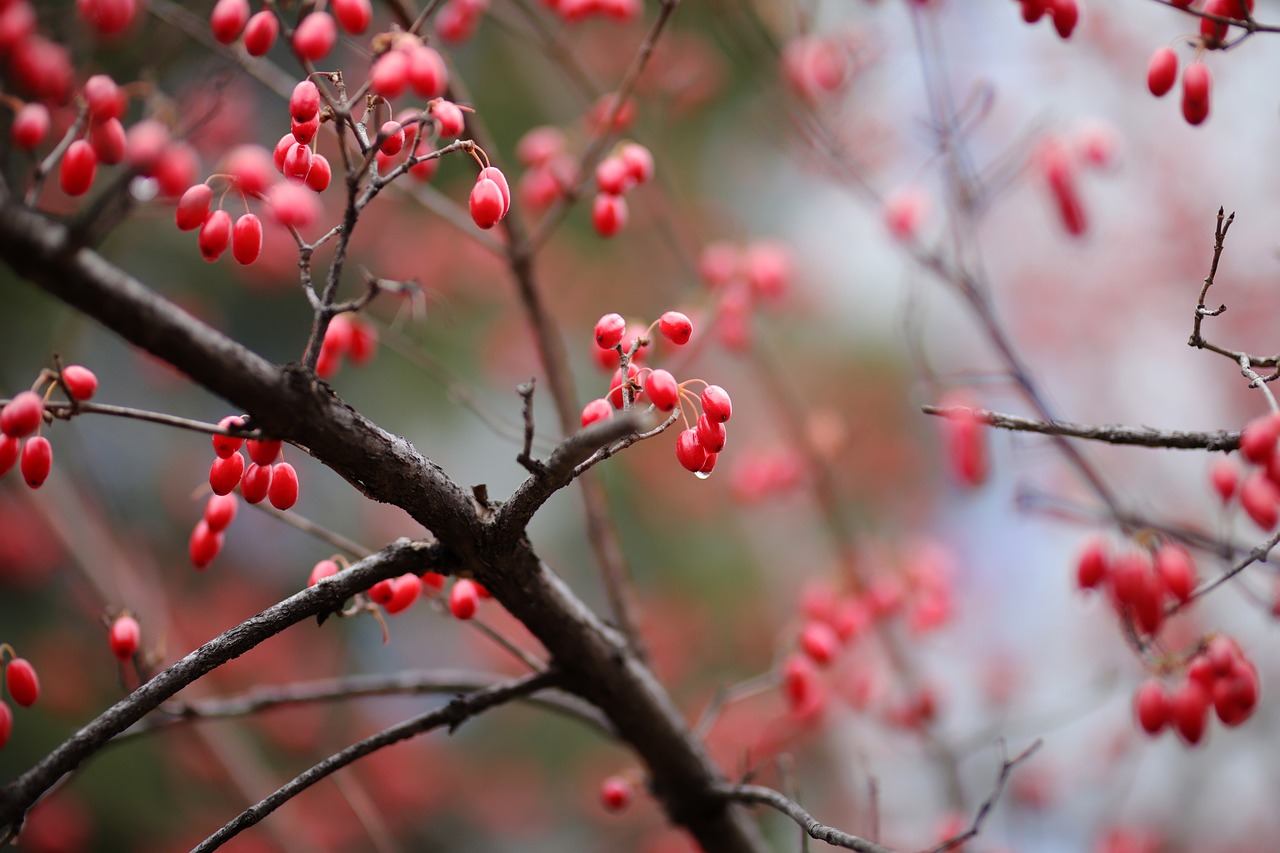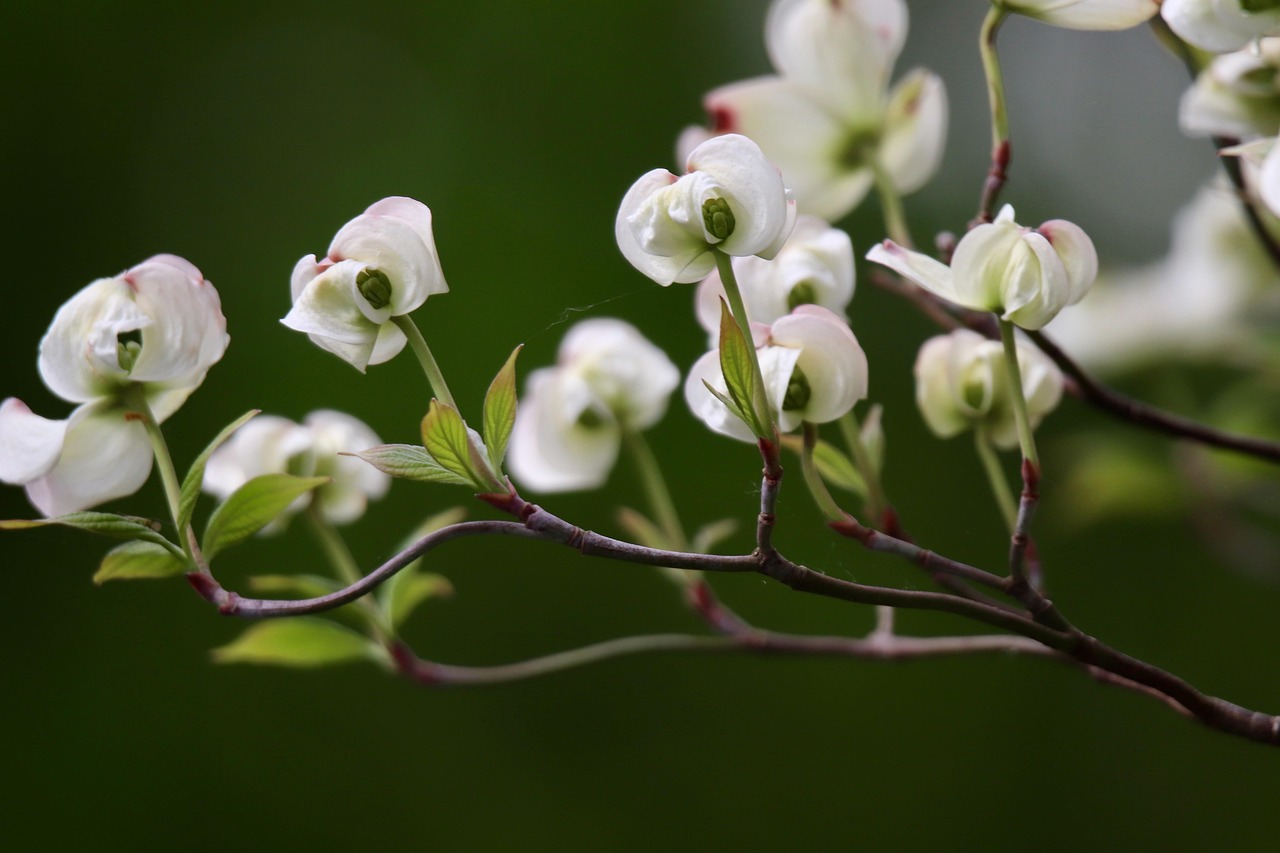Proper pruning of flowering dogwoods ensures healthy growth and a symmetrical appearance in the landscape. By removing dead or crowded branches, you can enhance air circulation and sunlight penetration, promoting a more vibrant tree and a visually appealing garden.
Flowering dogwoods (Cornus florida) are cherished for their stunning spring blooms, attractive foliage, and vibrant fall colors. These deciduous trees can grow to about 15 to 30 feet tall and 15 to 25 feet wide. Their graceful branches and layered structure add elegance to any landscape. However, to maintain their beauty and health, regular pruning is essential.

Pruning is not just about aesthetics; it also plays a crucial role in the health of the tree. Dogwoods are susceptible to various diseases and pests. Pruning helps remove diseased or infested branches, preventing the spread of issues throughout the tree. Furthermore, proper pruning techniques can lead to improved air circulation and light exposure, which are vital for the tree’s overall vitality.
Understanding Flowering Dogwood Growth Patterns
Before diving into pruning techniques, it’s important to understand the growth patterns of flowering dogwoods. These trees tend to develop a naturally layered structure, with branching patterns that can become dense if not managed. Here are some key points to consider:
- Flowering dogwoods have a moderate growth rate, generally adding about 1 to 2 feet in height each year.
- Their branching structure typically creates horizontal layers, which can lead to competition for sunlight if not pruned correctly.
- In optimal conditions, flowering dogwoods can live for over 80 years, making proper care essential for longevity.
Understanding these growth characteristics will aid in knowing when and how to prune effectively. Proper timing is critical; the best time to prune flowering dogwoods is in late winter or early spring before new growth begins. This timing allows for better healing and minimizes stress on the tree.

Essential Tools for Pruning Flowering Dogwoods
Having the right tools is crucial for effective pruning. Here is a list of essential tools you should have on hand:
- Hand pruners: Ideal for small branches up to ¾ inch in diameter.
- Loppers: Useful for cutting branches between ¾ inch and 2 inches thick.
- Saw: Necessary for larger branches exceeding 2 inches in diameter.
- Gloves: Protect your hands from cuts and scrapes during the process.
- Disinfectant: Clean your tools before and after use to prevent disease spread.
Using sharp, clean tools will make your cuts more precise and reduce damage to the tree. Dull tools can cause ragged cuts that may not heal properly, leading to susceptibility to disease.
Pruning Techniques for Symmetrical Growth
To achieve symmetrical growth in flowering dogwoods, certain techniques should be applied during the pruning process. Here are some recommended practices:

- Remove dead or diseased wood: Start by identifying any dead or diseased branches. Cutting these away helps improve the tree’s health.
- Thin crowded areas: Look for branches that cross or rub against each other. Removing some of these will enhance air circulation and light penetration.
- Cut back to a lateral branch: When shortening branch length, cut back to a lateral branch instead of making random cuts. This promotes better growth direction.
- Aim for a central leader: Encourage vertical growth by maintaining a central leader. This structure helps keep the tree balanced and aesthetically pleasing.
Applying these techniques will not only help maintain the health of your flowering dogwoods but also promote an appealing shape that enhances your landscape. Regular maintenance pruning every few years will keep your trees looking their best while ensuring they thrive for many seasons to come.
Common Mistakes to Avoid
While pruning is beneficial, there are common mistakes that can hinder the growth of flowering dogwoods. Awareness of these pitfalls can help you prune effectively:
- Over-pruning: Removing too much foliage can stress the tree and lead to poor health.
- Poor timing: Pruning at the wrong time can interfere with flowering and growth cycles.
- Ineffective cuts: Making improper cuts can damage the bark and lead to infections.
Avoiding these mistakes will help ensure that your flowering dogwoods remain healthy while achieving a symmetrical shape that complements your landscape design.

Seasonal Care for Flowering Dogwoods
Understanding the seasonal needs of flowering dogwoods is essential for maintaining their health and appearance. Each season presents unique opportunities for care that can help shape the tree and encourage robust growth. Below is a breakdown of seasonal care tasks to consider.
Spring Care
Spring is a critical period for flowering dogwoods as they awaken from winter dormancy. Here are key tasks to undertake during this season:
- Pruning: Late winter to early spring is the best time for pruning. This timing allows you to remove any dead or damaged branches before new growth starts.
- Fertilizing: Apply a balanced fertilizer in early spring to promote healthy growth. Look for a fertilizer with a ratio such as 10-10-10.
- Mulching: Adding a layer of organic mulch around the base of the tree helps retain moisture and suppress weeds.
Summer Care
During the summer, flowering dogwoods require attention to ensure they thrive in the warmer months. Here are some important care tips:
- Watering: Ensure adequate watering, especially during dry spells. Deep watering encourages strong root development.
- Pest Control: Monitor for pests and diseases. Aphids and scale can be problematic; apply appropriate treatments if necessary.
- Weed Management: Regularly check for weeds that may compete for nutrients and water. Manual removal is preferable to avoid harming the tree.
Fall Care
As the weather cools, fall presents an opportunity to prepare flowering dogwoods for winter. Key tasks include:
- Final Pruning: Conduct pruning if needed to shape the tree and remove any damaged branches that may have appeared over the summer.
- Soil Testing: Test soil pH and nutrient levels in the fall. Amend soil as necessary to prepare for winter dormancy.
- Leaf Cleanup: Rake up fallen leaves to prevent fungal diseases. Compost or dispose of the leaves properly.
Winter Care
While flowering dogwoods enter dormancy in winter, some care is still necessary to ensure they come back strong in spring:
- Protection from Frost: If you live in an area with harsh winters, consider wrapping young trees with burlap to protect them from frost damage.
- Inspect for Damage: Regularly check the trees for any signs of damage or disease during the winter months.
Pest and Disease Management
Pest and disease issues can significantly affect the health of flowering dogwoods. Being proactive about management can prevent serious problems down the line. Here are common pests and diseases along with their treatments:
| Pest/Disease | Description | Treatment |
|---|---|---|
| Aphids | Tiny insects that suck sap from leaves, causing curling and yellowing. | Use insecticidal soap or introduce beneficial insects like ladybugs. |
| Dogwood Anthracnose | A fungal disease leading to leaf spots and dieback. | Improve air circulation, prune affected areas, and apply fungicides if necessary. |
| Scale Insects | Small, hard-shelled insects that attach to branches and leaves. | Apply horticultural oil or insecticidal soap during the growing season. |
| Canker Diseases | Infections that cause sunken areas on branches, leading to dieback. | Prune out infected branches and ensure proper tree care to promote health. |
Regularly inspecting your flowering dogwoods will help you catch any issues early. Early intervention can make a significant difference in treatment success.
Enhancing Landscape Symmetry with Companion Planting
Incorporating companion plants can enhance the beauty of your flowering dogwoods while promoting a symmetrical landscape design. Choosing the right plants can complement the dogwood’s aesthetics and provide additional benefits:
- Choose Native Plants: Native plants are well adapted to your local environment. They require less maintenance and provide habitats for local wildlife.
- Avoid Invasive Species: Invasive plants can choke out your flowering dogwoods. Select non-invasive species that will coexist harmoniously.
- Create Layers: Utilize ground cover, shrubs, and perennial flowers to create visual layers around your dogwoods, enhancing symmetry.
Selecting companion plants that bloom at different times can provide year-round interest in your landscape while keeping the focus on your flowering dogwoods. This holistic approach not only beautifies your garden but also supports biodiversity.
Designing a Symmetrical Landscape with Flowering Dogwoods
Creating a symmetrical landscape around flowering dogwoods requires careful planning and design. The goal is to enhance the natural beauty of these trees while ensuring balance and harmony in your garden. Here are several strategies to consider when designing your landscape.
Understanding Symmetry in Landscape Design
Symmetry in landscape design refers to the balanced arrangement of plants, hardscapes, and other elements. Here are some principles to keep in mind:
- Formal Symmetry: This involves mirroring elements on either side of a central line. For example, placing identical shrubs or flower beds on both sides of the dogwood can create a formal look.
- Informal Symmetry: This approach uses varied elements that are not identical but still provide balance. For example, pairing a flowering dogwood with different shapes and colors of plants can achieve a harmonious effect.
- Focal Points: Designing with a focal point, such as a flowering dogwood, leads the eye and creates interest. Surrounding this focal point with complementary plants enhances its visual appeal.
Selecting Companion Plants for Symmetry
Choosing the right companion plants can enhance both the aesthetics and health of your flowering dogwoods. Here are some suitable options:
- Azaleas: These shrubs bloom in vibrant colors and thrive in similar conditions as dogwoods, adding a burst of color.
- Hostas: With their lush foliage, hostas can serve as ground cover that complements the flowering dogwood’s structure.
- Daylilies: These perennials provide long-lasting blooms and can fill spaces around the base of the dogwood.
- Hydrangeas: Their large flower clusters can offer a beautiful contrast to the delicate blossoms of dogwoods.
Consider planting these companions in layers to create depth and texture in your landscape design. Layering not only improves symmetry but also promotes biodiversity and attracts beneficial pollinators.
Creating Pathways and Hardscapes
A well-designed pathway can draw attention to your flowering dogwoods while providing structure to your landscape. Here are some ideas:
Pathway Materials
Selecting materials for pathways is essential for durability and aesthetics. Common options include:
- Pavers: Offering a classic look, pavers can be arranged in various patterns to create unique pathways.
- Gravel: A cost-effective option that provides excellent drainage while allowing flexibility in design.
- Natural Stone: Provides a rustic feel and blends well with natural surroundings.
Pathway Design Ideas
Your pathways should complement the symmetrical design of your landscape. Here are some design ideas:
- Straight Paths: Straight paths lead directly to the flowering dogwood. They provide a formal appearance that emphasizes symmetry.
- Curved Paths: Gentle curves can soften the hard edges of a landscape, creating an informal yet balanced look.
- Circular Patios: Incorporate circular areas around the base of the tree for seating or decorative features. This can create a stunning focal point while enhancing symmetry.
Incorporating Garden Features
Additions such as benches, sculptures, or water features can enhance your landscape’s beauty and symmetry. Here are some considerations:
Seating Areas
Placing benches or seating areas strategically can provide both functionality and aesthetic balance in your garden. Consider these points:
- Placement: Position seating areas so they face the flowering dogwood, encouraging visitors to appreciate its beauty.
- Materials: Choose materials that match or complement the natural elements of your garden, such as wood or stone.
Sculptural Elements
Sculptures or decorative features can serve as focal points while maintaining symmetry in your design. Here are tips for incorporating them:
- Balance: Place sculptures evenly on either side of the dogwood to enhance symmetry.
- Theme: Select sculptures that align with your garden’s theme, whether naturalistic or modern.
Water Features
A water feature can enhance both tranquility and visual appeal in your landscape. Consider these options:
- Ponds: Small ponds can reflect the beauty of your flowering dogwoods while attracting wildlife.
- Fountains: Fountains placed symmetrically can add movement and sound to your garden, enhancing the overall ambiance.
The integration of these features should blend seamlessly with your flowering dogwoods, reinforcing the overall symmetry and aesthetic appeal of your landscape design.
Choosing the Right Location for Flowering Dogwoods
The success of flowering dogwoods in your landscape greatly depends on selecting the appropriate location for planting. Proper placement will ensure that these trees thrive and contribute to a balanced garden design. Here are some factors to consider when choosing a location:
Sunlight Requirements
Flowering dogwoods prefer partial shade to full sun. Ideally, they should receive at least four hours of sunlight daily. However, too much direct sunlight can lead to leaf scorch. Consider the following:
- Morning Sun: Positioning the tree where it receives morning sunlight can be beneficial. This helps dry dew off the leaves and reduces the risk of fungal diseases.
- Protect from Harsh Afternoon Sun: If you live in a particularly hot climate, consider providing some afternoon shade. This can be achieved by planting near taller trees or structures.
Soil Conditions
Flowering dogwoods thrive in well-drained, acidic soil. Conducting a soil test before planting can provide valuable information. Here are some considerations:
- Aeration: Ensure the soil has good aeration. Compacted soil can hinder root growth and water drainage.
- Organic Matter: Incorporate organic matter or compost into the soil to improve its structure and nutrient content.
Space Considerations
When planting flowering dogwoods, consider their mature size and the spacing required for healthy growth. Here are some guidelines:
- Spacing from Other Plants: Allow at least 15 to 20 feet of space between flowering dogwoods and other trees or shrubs to prevent competition for resources.
- Distance from Structures: Plant them at least 10 to 15 feet away from buildings, fences, or other structures to avoid interference with growth and maintenance.
Maintaining a Healthy Dogwood Ecosystem
Beyond pruning and planting, maintaining a healthy ecosystem around your flowering dogwoods is essential. A thriving environment will support the health of not just the trees but also other plants in your garden.
Encouraging Biodiversity
The presence of diverse plant life around flowering dogwoods can enhance their health and resilience. Here are some tips for encouraging biodiversity:
- Nectar Plants: Include plants that attract pollinators, such as bees and butterflies. Examples include coneflowers and black-eyed Susans.
- Nesting Sites: Provide habitats for birds and beneficial insects by incorporating native shrubs and grasses into your landscape.
- Diversity in Planting: Aim for a variety of heights and textures in your garden to create a multi-layered effect that mimics natural ecosystems.
Regular Monitoring
Regular monitoring of your flowering dogwoods ensures any issues are addressed promptly. Here are some practices to adopt:
- Routine Inspections: Check for signs of pests, diseases, or nutrient deficiencies regularly throughout the growing season.
- Soil Moisture Checks: Monitor soil moisture levels to ensure proper watering. Deep watering is preferable over frequent shallow watering.
Final Thoughts
Pruning flowering dogwoods for symmetrical landscape growth involves more than just cutting branches. It requires understanding their growth patterns, seasonal needs, and how they fit within the broader ecosystem of your garden. By selecting appropriate companion plants, designing thoughtful pathways, and maintaining a healthy environment, you can create a stunning landscape that showcases the beauty of these remarkable trees.
The careful consideration of factors such as sunlight, soil conditions, and spacing will contribute to the success of your dogwoods. Regular maintenance practices, including pruning and monitoring for pests, ensure that your trees remain vibrant and healthy. Ultimately, a well-planned landscape featuring flowering dogwoods not only enhances your garden’s visual appeal but also fosters biodiversity and supports local wildlife.
By following these guidelines, you can enjoy the splendor of flowering dogwoods while achieving a balanced, symmetrical landscape that brings joy and beauty to your outdoor space for years to come.
